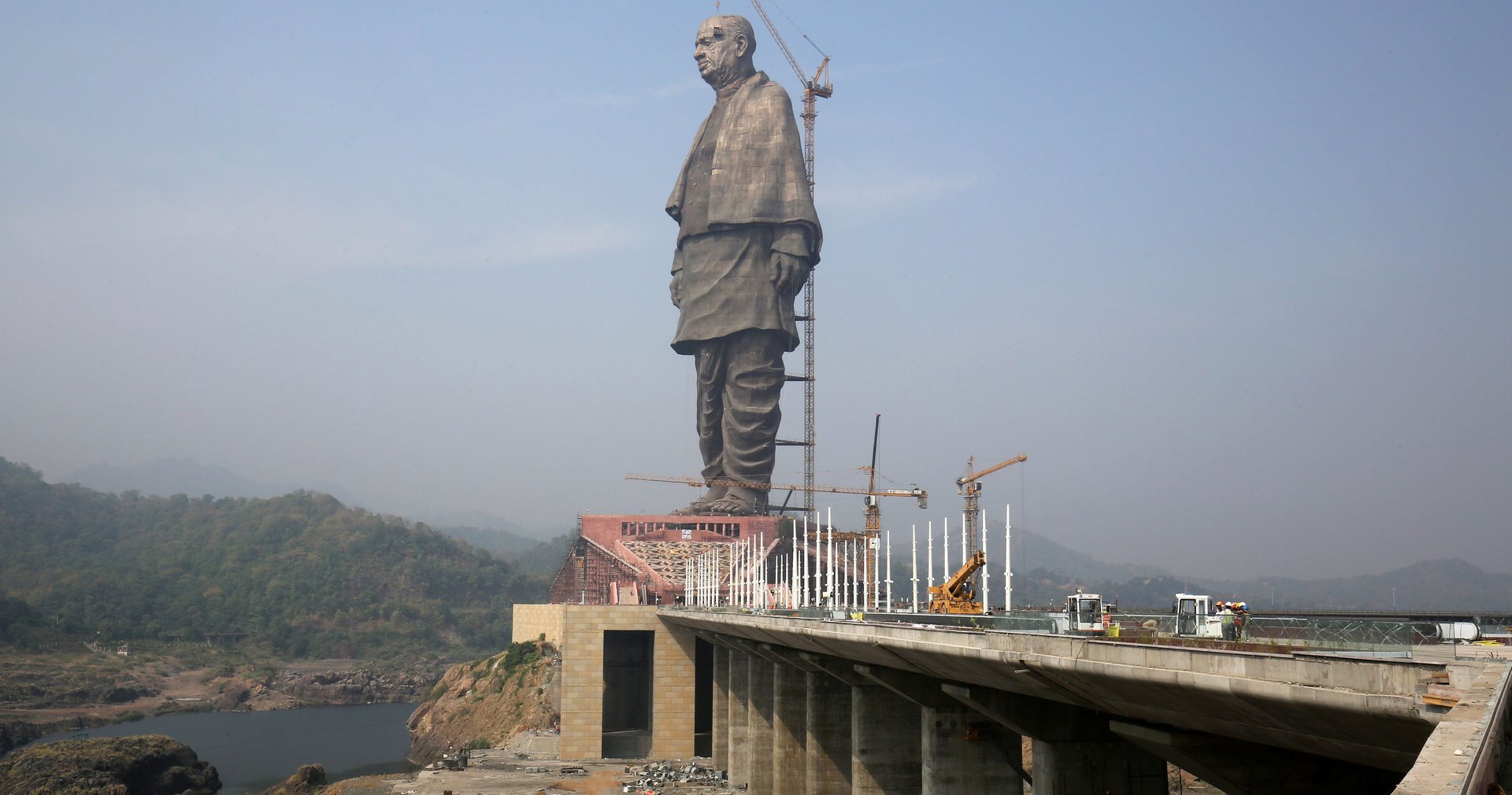India now has the world’s tallest statue, burnished by China
It’s been eight years in the making, but finally Indian prime minister Narendra Modi’s towering tribute to the independence-era leader who helped forge India into a nation is ready. The Statue of Unity, which portrays Sardar Vallabhbhai Patel, is nearly 600 feet tall—about twice the size of New York’s iconic Statue of Liberty. It also has its own website—which dubs him the Bismarck of India—and Twitter account.


It’s been eight years in the making, but finally Indian prime minister Narendra Modi’s towering tribute to the independence-era leader who helped forge India into a nation is ready. The Statue of Unity, which portrays Sardar Vallabhbhai Patel, is nearly 600 feet tall—about twice the size of New York’s iconic Statue of Liberty. It also has its own website—which dubs him the Bismarck of India—and Twitter account.
Modi announced his plans for the statue in 2010, when he was still chief minister of Gujarat, and its foundation was laid in 2013. During its construction, the $400 million project ran into many controversies, not least of which was how much this new landmark of Indian patriotism owes China. The bronze cladding work was contracted out by Larsen & Toubro, the engineering firm that has built the statue and surrounding complex, to Chinese foundry Jiangxi Tongqing Metal Handicrafts.
Based in southeastern China, the firm has worked on other monumental statues, mainly of the Buddha or his disciples, though nothing of this scale. The foundry couldn’t immediately be reached for more details on its work on the statue.
Larsen & Toubro, according to a person in India who was involved in the project, considered foundries globally and within India before settling on a Chinese foundry. Given the execution challenges and strict timeline, it was decided that there was “no point in experimenting with new players,” he said.
The main concern was not taking a risk with Patel’s appearance—which is well known—and risking an angry outcry. While the statue is largely made of concrete and reinforced steel, the bronze paneling was crucial to how that would turn out. Some 2,000 photos were collected from archives and other sources and shown to historians and other experts, and three replicas were made. The final replica, 30-feet tall, was sent to the foundry in China, which then cast some 6,500 bronze panels that weighed a total of 1700 metric tons (1875 tons). “Every panel formed a different part of the body part,” he said. “The face itself is 70 feet… just the intricacies of the face, the creases, require several units of panel.”
Only a limited number of Chinese workers traveled to India to help lay the cladding, he added, which accounts for less than 10% of overall materials used. In India, the “iron man’s” local workforce consisted of 300 engineers, and some 3,500 construction workers.
Indian officials have noted that the statue has toppled the previous holder of the “world’s tallest statue” title, China’s Spring Temple Buddha in Henan province. Modi, a staunch Hindu nationalist under whose rule religious fault lines have hardened, also pointed out when the project was first conceived that the Patel statue would be far taller than Brazil’s Christ the Redeemer.
Born on Oct. 31, 1875 in Gujarat, Patel worked closely with Mahatma Gandhi for independence, and was in the running to be India’s first prime minister, but that honor instead went to Jawaharlal Nehru, a fact that has long rankled with many nationalist leaders. The “unity” in the statue’s name refers to Patel’s role in convincing 565 big and small princely states to be part of the new country.
According to the person involved in the statue project, there’s a sense of relief that so far, people appear to be happy with the statue’s resemblance to the founding father. “It was a huge challenge,” he said. “If they had not liked it they would have reacted vehemently on Twitter.”